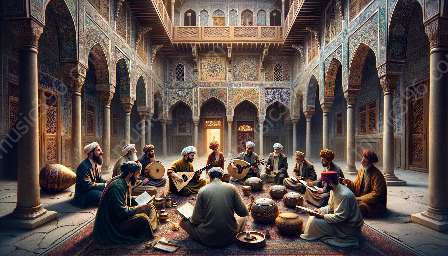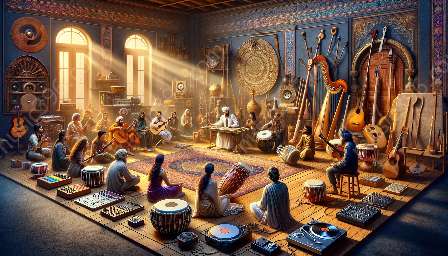Transcription and analysis play a crucial role in ethnomusicology, the study of music within its cultural context. This field not only focuses on the music itself, but also on the social, cultural, and historical factors surrounding it. When we examine the connections between transcription and analysis in ethnomusicology and the study of ritual and ceremony, it becomes evident how musical elements capture cultural, social, and historical dimensions.
Transcription and Analysis in Ethnomusicology
Transcription in ethnomusicology involves the process of notating or documenting music, often from oral or aural sources, allowing the music to be studied and analyzed. This transcription may include musical notation, recording, or describing in detail the musical attributes of a performance. Analysis, on the other hand, involves the systematic study of these transcriptions to uncover underlying patterns, structures, and meanings within the music. In ethnomusicology, transcription and analysis are essential for understanding the cultural significance and context of music within diverse communities and societies.
Role in Understanding Ritual and Ceremony
Ritual and ceremony are integral components of many cultures worldwide, often accompanied by specific musical expressions. Ethnomusicologists use transcription and analysis to explore how music is intertwined with these ritualistic practices. Through detailed transcription, researchers can capture the nuances of the music performed during rituals, including melodic patterns, rhythmic structures, and symbolic meanings. Analysis allows for a deeper understanding of how these musical elements contribute to the overall ritual or ceremonial experience, shedding light on the cultural, social, and spiritual dimensions embedded within the music.
Preservation and Documentation
Transcription and analysis also serve as tools for the preservation and documentation of musical traditions associated with rituals and ceremonies. By transcribing and analyzing ceremonial music, ethnomusicologists contribute to the safeguarding of intangible cultural heritage, ensuring that these musical practices are not lost over time. This meticulous documentation provides valuable insights into the historical and cultural contexts of rituals, offering a means of safeguarding traditions for future generations.
Interdisciplinary Approaches
When studying the connections between transcription and analysis in ethnomusicology and the study of ritual and ceremony, it is essential to adopt interdisciplinary approaches. Ethnomusicologists often collaborate with anthropologists, historians, and scholars from other disciplines to gain a comprehensive understanding of how music intertwines with rituals and ceremonies. By integrating perspectives from various fields, researchers can delve deeper into the multifaceted relationships between music, culture, and ritualistic practices.
Conclusion
The connections between transcription and analysis in ethnomusicology and the study of ritual and ceremony are intrinsic to understanding the role of music within diverse cultural and ceremonial contexts. Transcription and analysis not only facilitate the study of musical elements but also offer insights into the cultural, social, and historical dimensions embodied in rituals and ceremonies. Through these interdisciplinary approaches, ethnomusicologists continue to unravel the intricate connections between music, culture, and ritual, enriching our understanding of the diverse musical expressions found within human societies.



































